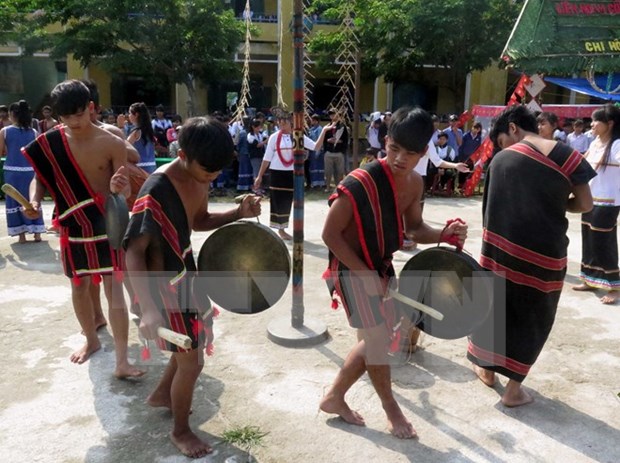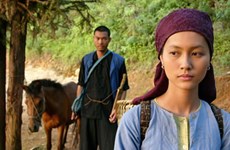Conference reviews Central Highland gong culture preservation
Localities in the Central Highlands received praise for their efforts over the last decade to preserve and promote the cultural practices surrounding the use of gongs.
 Illustrative image (Source: VNA)
Illustrative image (Source: VNA)During a conference in Kon Tum province to review the work, Deputy Minister of Culture, Sports and Tourism Dang Thi Bich Lien highlighted the region’s successes, expressing her hope for more improvement in the field.
The conference heard that projects to conserve gong culture proved effective, contributing to preserving cultural diversity in specific localities and across the nation.
Training courses have been offered to instruct local children to play gongs, helping the number of gong teams in the region, including groups of young players.
A number of traditional and cultural festivals were also held every two to five years to help ethnic minorities popularise their culture.
At the event, representatives from localities shared their experiences, and measures to preserve and promote the cultural heritage.
Dak Lak province alone has spent a large amount buying sets of gongs for cultural centres in ethnic minority communities.
Gia Lai and Dak Lak devised projects to teach gong-playing in schools. Experienced players were invited to give lessons to young people.
Kon Tum has collected sets of gongs and preserved spaces for performances.
Gongs, considered the most sacred and valuable asset in every ethnic minority family in the Central Highlands, have historically been played at ethnic minority groups’ traditional rituals and festivals.
Ethnic minority families in the region have 9,880 sets of gongs. There are 5,650 sets in Gia Lai and another 2,307 in Dak Lak. Most of the gongs belong to the Jarai, Bahnar, Ede and M’nong groups.-VNA











